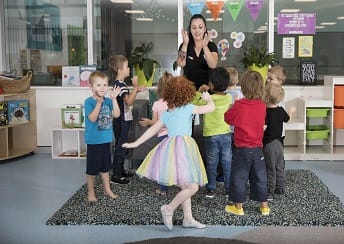Author: Rene Perry- Child Protection Manager
Amongst my family and friends growing up in the 80’s, penises were called wangs, willies or doodles and the words nuts and balls were sure to bring a wry smile or fits of giggles. As a girl, I had girl ‘bits’ but I don’t think vaginas were spoken about in words. I remember vague gestures to ‘down there’ and sweeping generalisations of “private parts” spoken in hushed tones that served as the all-encompassing term for the ‘bits that seemingly must not be named’. At Primary School, by year 5 I had had “the talk” both at home and at school, but the extent of discussion around body safety, consent and protective behaviours was limited at best. My Mum, a teacher, was calm, open, responsive whilst being straightforward and informative. My Dad, a truck mechanic appeared incredibly uncomfortable by the whole idea and was quite often conveniently missing from the room.
Fast forward 20 or so years and in my role in child protection, interviewing children and bearing witness to accounts of child abuse and harm including sexual abuse brought along with it an entirely new range of words and phrases, feelings and challenges. One of the tools used in investigative interviewing with children was the use of a body chart; a non-labelled diagram of a child’s body where you ask the child to name the body part that you pointed to. It was clear even in the early 2000’s that using the correct anatomical names for genitals as part of everyday parenting and teaching language was still missing and anecdotally, children and adults alike still preferred terms or nicknames such as ‘flower’ or ‘lily’, ‘fanny’, ‘weewee’, ‘doodle’, ‘cha cha’, ‘cookie’. For whatever reason, embarrassment, personal, cultural or societal, the use of and furthermore, the teaching of children to know and use the correct anatomical terms for vagina and penis can still pose an uncomfortable challenge to many adults today. Teaching children the correct anatomical name for their genitals is one of several critical components of body safety education and a conversation that can begin early in life. Even if you have started using nicknames for genitals, you can still start explaining to children that at home we call it “a doodle” but it has another name and it is called a penis. The discussion can then flow into introducing the concept of ‘private parts’ and privacy and further, the opportunity to start discussions with children about consent – who can touch their private parts and for what reasons; a Doctor for medical reasons, or a parent/carer for hygiene reasons.
We talk with children about ‘stranger danger’, wearing a seat belt to be safe in the car, wearing sunscreen and hats to protect us from the sun, swimming between the flags at the beach and a myriad of other subjects and ways in which we empower children to identify and speak up about unsafe practices. The dynamics of grooming and sexual abuse of children in both the physical and online environment are confronting and complex, and the potential for peer to peer harm and risks in both the physical and online environments complicating the issues further. It is understandable that families can feel at a loss with how to approach body safety education with their children in age-appropriate ways without mentioning sex or sexual abuse or creating fear or anxiety in their children. Despite the discomfort we feel, body safety conversations with children throughout childhood and into the teen years is a critical life skill and empowering strategy of protection.
Approaches to preventing and protecting children from sexual abuse and other types of harm require combined efforts targeting child focussed protective behaviours programs but also in partnership with the wider family and community context (Pam Linke, 2015). As protective allies we have the opportunity to teach children help seeking behaviours, and to build responsive and child centric relationships and networks that provide early, positive, age appropriate and consistent information to children.
Key concepts include;
– children have a right to feel safe all of the time
– private parts being “just for you”
– body signals and early warning signs
– personal boundaries
– different kinds of touch
– safe and unsafe situations and feelings
– how to seek help from trusted adults and to keep telling until they are believed
When children know that they can talk with their trusted adults about all of their body parts and functions without shame and embarrassment, these conversations assist in the prevention of sexual abuse and disclosure in the even that something has occurred.
Bravehearts 2021 Child Sexual Assault: Facts and Stats show
- In up to 90% of child sexual assault cases, the offender is known to the family
- A child aged 0-9 years is approximately 40 times more likely to be the victim of sexual assault than of kidnapping or abduction.
Big Fat Smile is a child safe organisation committed to ongoing partnerships with our educators and families to build safety and wellbeing of children. We take our role as educators in children’s safety networks seriously and invite you to join us on 15th March 2022 with author of “Only for Me’ Michelle Derrig to better understand body safety education and how to start and continue body safety conversations with young children aged 3 to 8 years.
2022 Big Fat Smile Workshop Flyer



